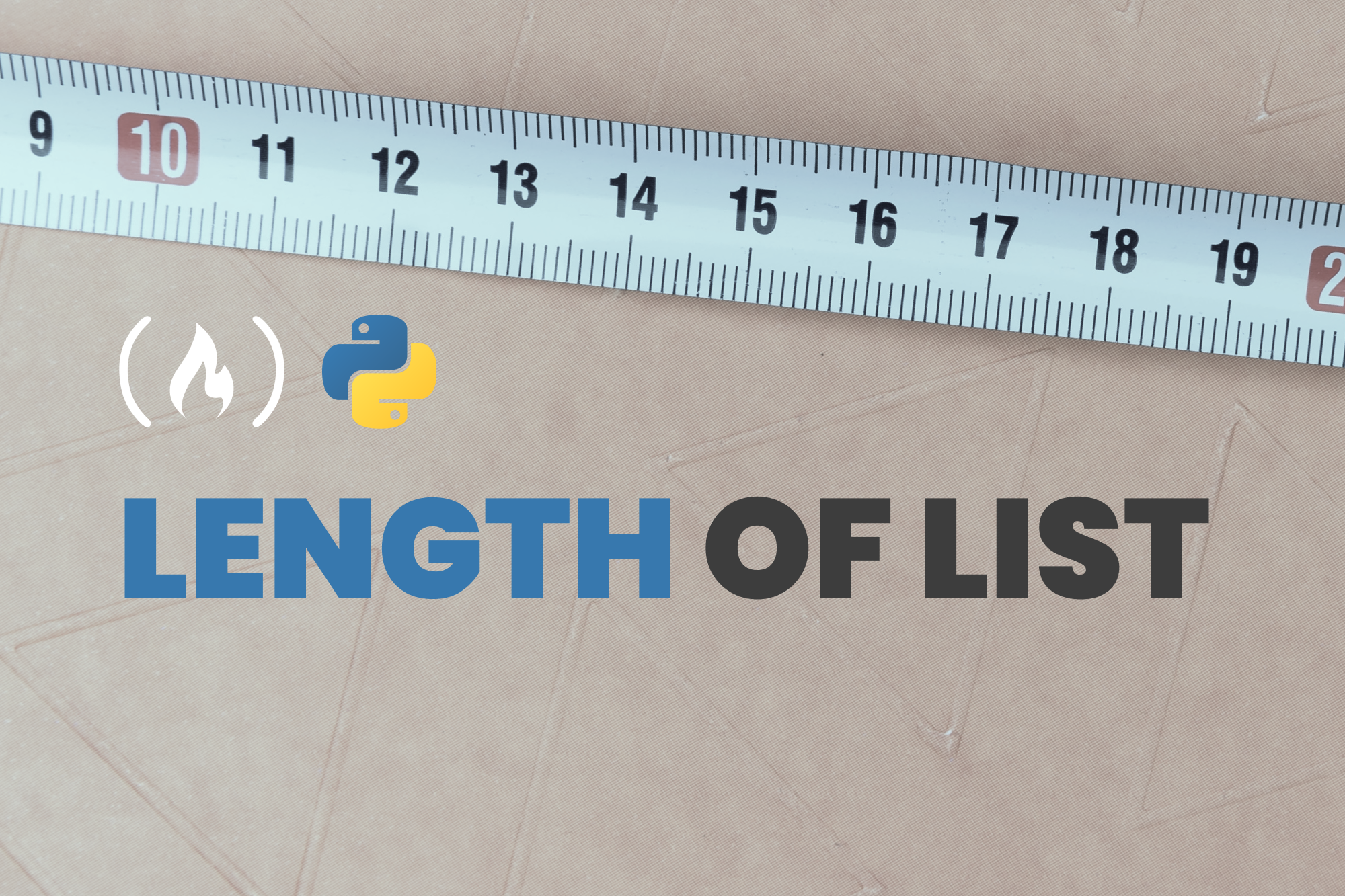A list is a data structure in Python that contains multiple elements in a particular order. And sometimes you might need to get the size of a list. I'll show you how to do that in this article.
How to Create a List in Python
You can create lists in Python with square brackets. In the square brackets, you specify the different elements (or values) separated by commas.
You can store strings, numbers, lists, and so on in a list:
items = ["python", True, [50, 30], 80]
print(items)
# ['python', True, [50, 30], 80]
print(items[2][0])
# 30
Here, we also have a nested list.
So how do we get the length of a list? For a list with just a few items, it's easy to count the items manually. But a longer list may not be that easy.
Well, you can do this easily in Python. I'll show you two ways: a long way, and a shorter way.
I have a short video on this topic you can also check out.
How to Get the Size of a List Using a for loop in Python
You can get the size of a list by looping through the list and keeping track of the size using a variable. Here's what I mean:
languages = ["python", "javascript", "ruby", "java", "go"]
# initialize size variable
size = 0
for value in languages:
# increment variable in every loop
size = size + 1
print(size)
# 5
In this example, we have an array of five values. First, we initialize a size variable to 0. Then we have the for loop statement, where we loop through each value in the array. In each loop, we increment the size variable by 1. In the end, the size variable will hold the size of the list.
Let's look at the short way next.
How to Get the Size of a List Using the len Function in Python
The len function returns the number of values in an iterable in Python. It's a simple and efficient function for this purpose. An iterable can be a list or a dictionary.
Let's see an example for getting the length of a list:
languages = ["python", "javascript", "ruby", "java", "go"]
length = len(languages)
print(length)
# 5
By passing the languages list as an argument to len, the function returns the number of values in it, which is 5.
The len isn't only for lists as I mentioned earlier. You can also use it on dictionaries and strings:
dict = {
"name": "Dillion",
"age": 70,
"language": "python"
}
print(len(dict))
# 3
sentence = "I am Dillion"
print(len(dict))
# 12
For the dict dictionary, len returns the number of properties. For the sentence string, len returns the number of characters.
Wrapping Up
In this article, we've seen how to get the size of a list using a long approach – the for loop statement – and a shorter and more efficient approach – the len function.
If you enjoyed this, please share it. :)

